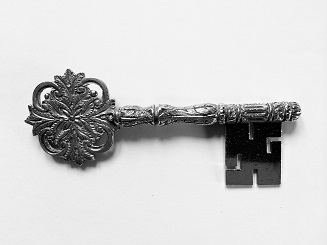
If you ask five Freemasons why they joined, you will get at least five different answers. Each person has their own reasons. (I say “person” because there are female freemasons, albeit not as part of the United Grand Lodge of England) These reasons can be intensely personal and for many there is not a single reason.
Some of the reasons people give include:
- Family
- Curiosity
- Wanting to join an organisation
- To meet other people
- Looking for a new challenge
- Charity
- Camaraderie
- To have fun
- To learn new skills
Family
For me this is a very significant reason. My father, grandfathers and great-uncle were all masons at points in their lives. It has been part of my consciousness from an early age and I had always wanted to join.
This is not unusual; many masons are brought in by blood or in-law relations. It is wonderful to see how Freemasonry can reunite families who live significant distances apart, when one member has a special occasion to celebrate, such as becoming Worshipful Master of their Lodge.
Curiosity
I knew my father went out in the evenings “suited and booted” with his case and I wondered what it was all about. I read as much as I could but nothing prepared me for the warmth and affection I found when I was initiated.
A note of caution here – the ritual is available on the Internet if you look – but please don’t, it will spoil your evening if you do.
Wanting to join an organisation
Humans are social animals and many love the engagement with others that joining an organisation brings. The wide ranging spread of freemasonry really helps with this desire. Lodges exist throughout the country and wider world. Changing address does not mean that you lose contact with Freemasonry. Also, if you have to move for some reason, what better way is there to build a new local network of friends than by joining a Lodge in your new area?
To meet other people
Freemasonry brings together people of varying backgrounds, faiths, skills and interests and gives them a common bond. Whilst membership of a golf club tells you that a person likes and plays golf, being a freemason tells you about their moral values and being an initiation society ensures that all freemasons have a common shared experience.
Looking for a new challenge
Freemasonry offers a number of challenges, from learning the ritual, to public speaking, acting as secretary or treasurer or even the highest accolade any member can be given by his Lodge, to act as Worshipful Master.
Charity
Freemasonry is inextricably linked with charity. It is unusual in that all funds raised come from the membership. Freemasonry does not look to raise money from non-Masons but expects all Freemasons to give freely within the bounds of their personal capability. Charity is described as the “distinguishing characteristic of a freemason’s heart.”
Camaraderie
There is always a degree of banter and joking within a group. Within freemasonry there is a tendency to be supportive and a recognition of the effort required to memorise long tracts of text and deliver them with sincerity to a candidate. The ritual also encourages the amicable settlement of any differences before entering the Lodge.
The discussion of religion and/or politics is expressly forbidden within masonic meetings. This removes the foundation for many arguments and has enabled brethren to meet across an otherwise unbridgeable divide. For example, the Grand Master of the Grand Lodge of Israel is a Palestinian.
Having fun
It should be remembered that first and foremost Freemasonry is a hobby. For some officers within the Lodge it can sometimes seem like a job, particularly when others are enjoying the camaraderie at the bar and you are still collecting dining fees! However, when you go visiting you can forget all that and let someone else take the strain.
Visiting is one of the joys of being a freemason. Seeing how other Lodges “have always done it” differently to your own Lodge means every Lodge meeting is a joy. Meeting old friends and new is the cornerstone of freemasonry.
Learning new skills
Freemasons who take an active role within the Lodge will learn many things. The ritual elements are single act plays, delivered out loud by a small cast to a highly supportive audience. As an active officer, masons will gradually become comfortable with the idea of speaking in public. They will also have learnt the art of memorising the words and standing in the right place at the right time.
Secretaries and treasurers learn the skills required to successfully organise and run what is essentially a small not-for-profit business. Those attaining the office of Worshipful Master will learn how to manage to consensus and to rule their Lodge.
If this post has inspired you to join Freemasonry, all you need to do is ask.
